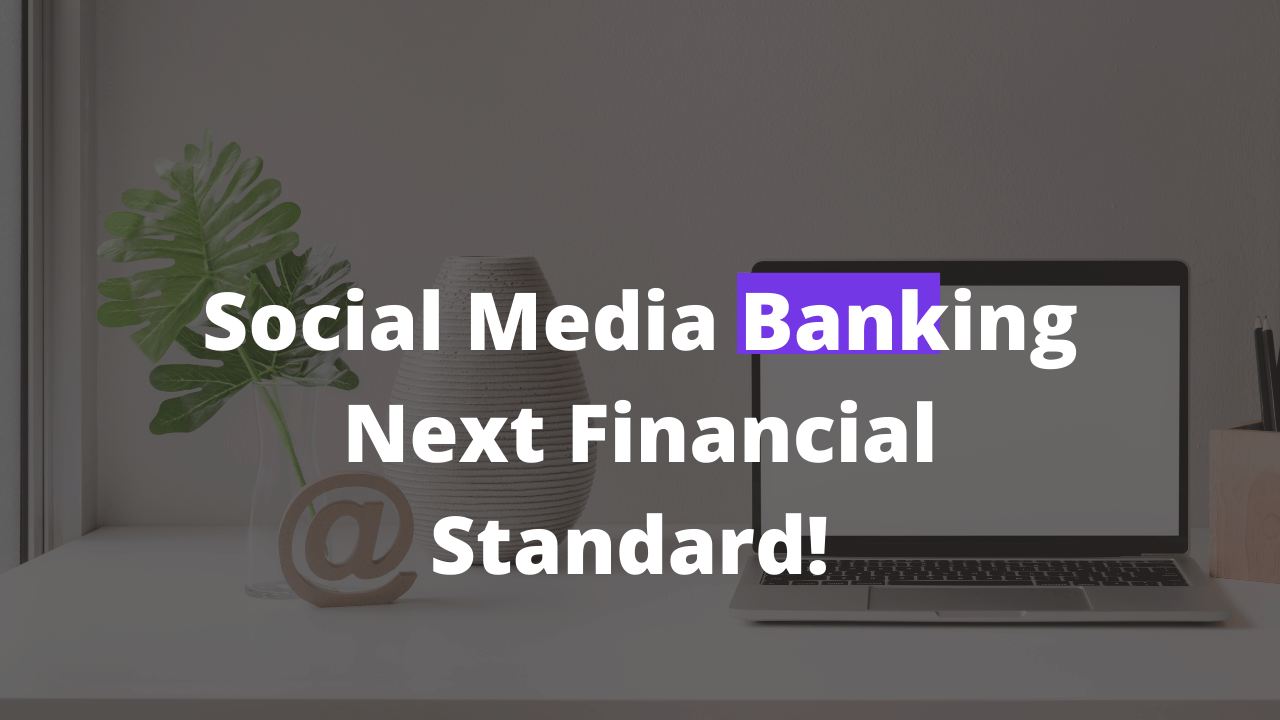Fintech innovators, Gen Z’s digitally native worldview, and the viral success of short videos have all convinced banks that it’s no longer enough to merely keep pace with social media, now they have to plunk in headfirst. But it’s more than a question of hashtags or glossy Reels. Social media banking is rewriting how people feel, interact with, and even trust banks.
From Branches to Newsfeeds
Scrolled on Instagram a couple of months ago and found myself with a campaign from a bank in my town that made taking personal loans appear, sacrilege or not, trendy. It was then I realized just how much banks had shifted the dial on social-first branding. Since then, I’ve seen banks doing live Q&As on TikTok, resolving customer complaints via Instagram DMs, and even meme-ing their way into the spotlight.
This is not a random move. It’s one of presence, connection, and going where the people are. As a recent poll demonstrated, 62% of those aged under 35 would rather interact with their bank through social media than in a physical setting. That statistic alone accounts for why this is happening, and fast.
If engagement is the money, then the social sites are the bank.
And not only for legacy institutions. Fintechs are on TikTok explaining complex things in seconds. Some even pay creators to create content. In a digital economy where impressions are currency for trust, having a presence online isn’t just a branding choice, it’s a must.
More Than Likes
I have students who used to think bank careers were all numbers and business attire. Today they are producing banking TikToks, managing influencer partnerships, or tracking hashtag analysis for investment platforms. The skill sets are shifting, and the dreams are changing, too.
Banks are placing big bets on content plays that blend education and entertainment. Why? Because gaps in financial literacy are wide, but social media is where people are receptive to learning. My banking client increased youth sign-ups by 34% after launching a financial tip series on TikTok.
Conversational Interfaces
Remember waiting on the phone for 30 minutes for basic bank queries? Ah, me too. Today, it’s not unusual to just send a message on Facebook or start a WhatsApp conversation with your bank’s chatbot. Some even let you do things like check balance or report lost card directly from messaging apps.
One of the banks I interviewed had a record customer satisfaction month when they rolled out AI-driven solutions on Instagram. No surprise there ease of use is a loyalty driver.
This is not a question of eliminating human touch. It’s a question of repositioning it. A kind tweet can win more hearts than a perfectly scripted corporate email ever could.
Dangers Hidden Under the Surface
That’s all well and good, but the more banks get involved in social media, the more they open themselves up to risk. Scams, phishing, and misinformation travel on these sites like wildfire. Banks cannot be reactive they must have controls in place for protecting data and brand reputation.
I also counselled a local credit union that was the victim of a significant reputational horror from a fake Instagram page. The solution wasn’t merely taking down the page; it was being open and rapid to communicate with their members, demonstrating to them that they were in charge.
Encryption, two-factor authentication, and authenticated profiles are becoming as important on Instagram as they are within mobile apps. Consumers now expect frictionless and secure experiences at all touchpoints.
The Finfluencer Revolution
It’s amazing what weight a 30-second TikTok clip from a personal finance creator can carry. I’ve watched creators break down interest rates, inflation, and cryptocurrency in a way that’s easier to understand than most textbooks. Banks are paying attention, and some are entering partnerships to get into these pre-established circles of trust.
If done right, this approach isn’t about using creators as mouthpieces. It’s a collaboration. Younger consumers are especially open to financial content delivered by someone who talks like them, looks like them, and has the same experience.
I’ve seen bank ads, in partnership with creatives, outdo traditional commercials by a mile. Why? Because it’s guidance that feels real, not contrived.
Social Media Banking Will Only Get Smarter
In the future, I see social media banking being more personalized. With AI, machine learning, and behavioral analytics, your money stream could become your shopping algorithm soon. Personalized offers, customized content, and predictive guidance will be the norm.
There’s even talk of integrating banking functions into the metaverse or saving goals on social media as a game. If you think that’s too bleeding-edge, think about this: five years ago, no one imagined you’d be approving loans through a Facebook chatbot. Tools like https://views4you.com/instagram-story-viewer/ show just how intertwined social platforms and data-driven interactions have already become.
FAQs
What is social media banking in simple terms?
Social media banking refers to financial services or interactions that take place on social platforms like Instagram, Facebook, TikTok, or WhatsApp. This includes features like chatting with bank reps, accessing account info, or learning about financial products—all without leaving your app.
Is it safe to use banking services on social media platforms?
It depends on the bank’s systems and your own caution. Reputable institutions use encryption, secure APIs, and verified profiles. Still, it’s important to avoid clicking on suspicious links or sharing personal info via unverified messages.
Which banks currently offer social media banking features?
Several major banks like Bank of America, HSBC, and HDFC offer limited services via platforms like WhatsApp and Facebook. Many fintech apps also operate primarily through social media, especially for support and customer engagement.




